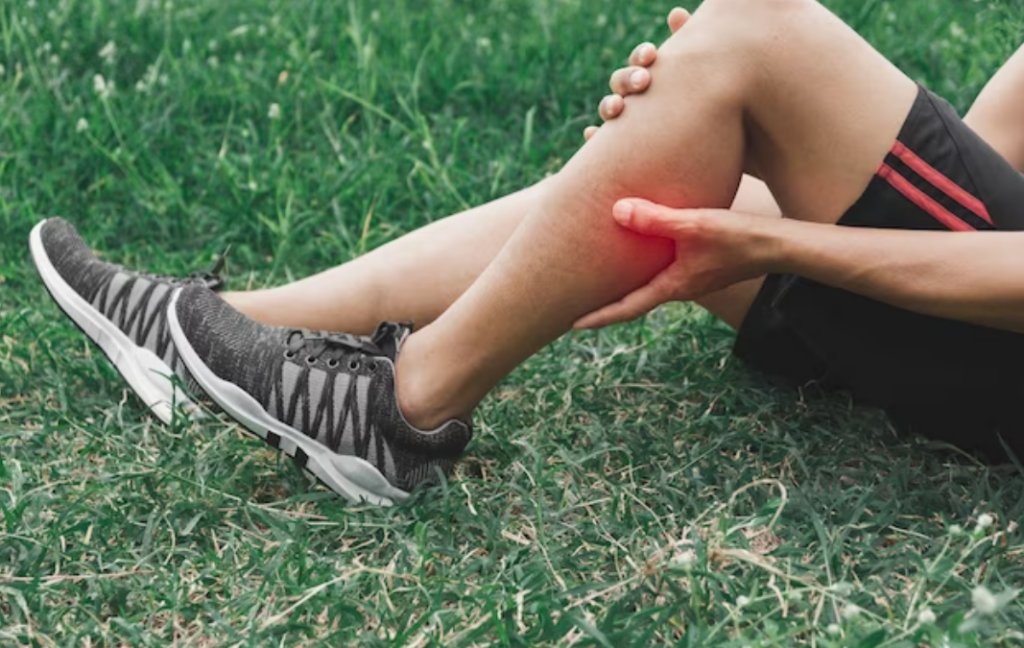If you've noticed your child complaining about back pain, you're not alone, and it's essential to address it sooner rather than later. Many factors contribute to this issue, from improper backpack usage to sedentary lifestyles. In Fort Worth, a range of solutions exists, including specialized physical therapy and simple ergonomic adjustments at home. Understanding these options can make a significant difference in your child's comfort and overall well-being. But how do you determine the best course of action for your situation? Let's explore some effective strategies that could help.
Understanding Childhood Back Pain
When you think about back pain, you might picture it affecting only adults, but childhood back pain is more common than you'd expect. Kids aren't immune to this discomfort, and it can arise from various factors. Understanding childhood back pain is vital for parents, educators, and healthcare providers to guarantee timely intervention and relief.
Back pain in children can manifest in different ways, ranging from mild soreness to severe discomfort that interferes with daily activities. You might notice your child complaining of aches after a long day at school, particularly if they've been sitting for hours.
Posture plays a significant role in this; slumping in chairs or carrying heavy backpacks can contribute to strain. Additionally, children who participate in sports may experience muscle tightness or injury, leading to back pain.
It's also essential to recognize that emotional well-being can influence physical health. Stress and anxiety, common in today's fast-paced environment, can manifest as physical symptoms, including back pain.
As a parent, you'll want to pay attention to any changes in your child's behavior, such as reluctance to engage in activities they once enjoyed.
Common Causes and Risk Factors
Back pain in children often stems from a variety of common causes and risk factors that parents should be aware of. One of the most frequent culprits is poor posture, especially with the rise of technology. You might notice your child slouching while using their phone or sitting incorrectly at their desk, which can lead to discomfort over time.
Another significant factor is heavy backpacks. If your child carries a backpack that's too heavy or worn incorrectly, it can strain their back muscles. You should encourage them to pack only what they need and guarantee the backpack has padded straps for added support.
Sports injuries are also a common cause of back pain in kids. High-impact activities or improper techniques can result in muscle strains or injuries to the spine. Make sure your child warms up properly before engaging in sports and uses appropriate protective gear.
Additionally, excessive screen time can contribute to back pain. Sitting for prolonged periods without breaks can lead to stiffness and discomfort. Encourage your child to take regular breaks to stretch and move around.
Finally, genetics and underlying health conditions can play a role. If there's a family history of back problems, your child may be at a higher risk. Keep an eye on their symptoms and consult a healthcare professional if you notice any persistent pain.
Importance of Early Intervention
Early intervention is vital for addressing childhood back pain effectively. When you notice your child complaining about back discomfort, it's imperative to act quickly. Ignoring the issue can lead to more significant problems down the road, including chronic pain or mobility limitations.
By taking early steps, you can help prevent these complications and promote a healthier future for your child.
Timely intervention allows for a thorough assessment of your child's condition. Through proper evaluation, healthcare professionals can identify the root causes of the pain, whether it's due to poor posture, muscle imbalances, or other factors.
Once identified, appropriate strategies can be implemented to alleviate symptoms and improve overall spinal health.
Additionally, addressing back pain early can help your child maintain their daily activities, such as school, sports, and social interactions. When kids experience pain, they might avoid physical activities, which can hinder their growth and development.
Early intervention guarantees that they stay active and engaged, fostering a positive mindset and promoting overall well-being.
Moreover, educating both you and your child about proper body mechanics and posture is an important aspect of early intervention. This knowledge can empower your child to make healthier choices and adopt habits that prevent future pain.
Effective Physical Therapy Techniques
When it comes to relieving childhood back pain, targeted stretching exercises and strengthening core muscles are essential.
These techniques not only improve flexibility but also provide the support needed for a healthy spine.
Targeted Stretching Exercises
Targeted stretching exercises can be a game changer for children suffering from back pain. These exercises focus on specific muscle groups, helping to relieve tension and improve flexibility. By incorporating these stretches into your child's routine, you can help alleviate discomfort and promote better posture.
Start with gentle stretches, like the cat-cow stretch, which encourages spinal flexibility. Have your child alternate between arching their back and rounding it while on all fours.
Another effective stretch is the seated forward bend. Sitting on the floor with legs extended, your child can reach for their toes, which helps lengthen the spine and stretch the hamstrings.
Encourage your child to hold each stretch for 15 to 30 seconds, breathing deeply and relaxing into the stretch. Consistency is key, so aim for a few sessions each week. You might even join in to make it fun!
Always consult with a physical therapist or healthcare provider before starting any new exercise program, especially if your child has severe or persistent back pain.
Targeted stretching exercises can offer significant relief, helping your child feel more comfortable and active in their daily life.
Strengthening Core Muscles
Strengthening core muscles is essential for alleviating childhood back pain, as a strong core supports proper posture and spinal alignment. When your child's core is strong, it helps stabilize the spine, reducing strain on the back during daily activities. You can incorporate several effective physical therapy techniques to strengthen these muscles.
Start with simple exercises like planks and bridges. Encourage your child to hold a plank position for 20-30 seconds, gradually increasing the duration as they gain strength.
Bridges are another great option; have them lie on their back with knees bent and lift their hips toward the ceiling, engaging the glutes and core.
Incorporate fun activities like yoga or swimming, which naturally engage core muscles while promoting flexibility. You can also use stability balls for exercises, like sitting or doing gentle bounces, to enhance balance and core strength.
Ensure that your child maintains proper form throughout these exercises to prevent injury.
Consistent practice won't only alleviate back pain but also improve your child's overall strength and confidence. With a strong core, they'll be better equipped to handle physical challenges and enjoy an active lifestyle.
Recommended Exercises for Kids
Incorporating regular exercise into your child's routine can greatly alleviate back pain and promote healthier posture. Engaging in specific exercises can strengthen muscles, improve flexibility, and enhance overall body awareness, which is essential for kids, especially with their growing bodies.
Start with simple stretches. Encourage your child to perform gentle stretches like the cat-cow stretch, where they alternate between arching and rounding their back. This exercise not only increases flexibility but also helps relieve tension.
Another effective stretch is the child's pose, which helps elongate the spine and relaxes the back muscles.
Next, consider strengthening exercises. Planks are fantastic for building core strength. Have your child lie face down, then lift their body off the ground while keeping it straight like a board. They can hold this position for 10 to 30 seconds.
Additionally, bridge exercises are great for strengthening the lower back. Have your child lie on their back with knees bent and feet flat on the ground, then lift their hips towards the ceiling, forming a straight line from shoulders to knees.
Incorporate fun activities too, like swimming or dancing. These promote movement without putting too much strain on the back.
Encourage your child to participate in sports that emphasize good posture, such as martial arts or gymnastics.
Ergonomic Adjustments at Home
When it comes to reducing back pain in kids, making ergonomic adjustments at home is essential.
You should focus on proper desk setup, supportive seating options, and ensuring the screen height is just right.
These simple changes can make a big difference in your child's comfort and overall posture.
Proper Desk Setup
A proper desk setup is essential for preventing and alleviating childhood back pain. Start by ensuring your child's desk and chair are at the right height. Their feet should rest flat on the floor, or use a footrest if needed. The knees should be at a 90-degree angle, which helps promote good posture.
Next, position the monitor at eye level, so your child doesn't have to strain their neck. The top of the screen should be at or just below eye level, and it should be about an arm's length away. This distance helps reduce eye strain and encourages a comfortable neck position.
Encourage them to keep their back straight and shoulders relaxed while seated. A few reminders throughout the day can help them maintain this posture.
Also, make sure they've enough workspace for books, notebooks, and any other materials they need, preventing them from leaning too far forward.
Lastly, remind your child to take breaks every 30-60 minutes. Standing up, stretching, and walking around can greatly reduce discomfort and promote better overall health.
With these adjustments, your child can focus on their studies without the distraction of back pain.
Supportive Seating Options
Choosing the right seating can make a considerable difference in your child's comfort and posture while studying or using a computer. When selecting a chair, look for options that offer good lumbar support, as this helps maintain the natural curve of the spine.
A chair with adjustable height is essential; it should allow your child's feet to rest flat on the floor while keeping their knees at a right angle.
Consider using chairs with armrests, too. This encourages proper shoulder alignment and reduces tension in the upper back. If you can't find a chair that meets all these criteria, you might want to invest in a seat cushion designed for ergonomic support.
It's also worth noting that your child should take breaks to stretch and move around. Even the best chair can't replace the benefits of regular movement.
Pairing supportive seating with a consistent break schedule can considerably enhance their overall comfort.
Ultimately, the right chair won't only support their posture but also help them focus better on their studies, reducing the likelihood of developing back pain in the future.
Correct Screen Height
Setting the correct screen height is essential for preventing childhood back pain and promoting good posture during study sessions. When your child sits down to work, guarantee the top of the screen is at eye level. This way, they won't have to bend their neck or slouch their back, which can lead to discomfort over time.
To adjust the screen height, you can use a monitor stand, stack books, or even a purpose-built riser. Make sure their chair is at the right height too, allowing their feet to rest flat on the ground or a footrest.
If they're using a laptop, consider a separate keyboard and mouse to maintain proper positioning.
Encourage your child to take breaks every hour. During these breaks, they should stand, stretch, or walk around to keep their muscles active and reduce tension.
Remind them to maintain a neutral wrist position while typing, which will also help prevent strain.
Lifestyle Changes for Prevention
Incorporating simple lifestyle changes can greatly reduce the risk of childhood back pain. Start by encouraging regular physical activity. Aim for at least an hour of exercise most days. Activities like swimming, biking, or even playing tag can strengthen muscles and improve flexibility, which helps support the spine.
Next, pay attention to posture. Teach your child to sit up straight in chairs and to keep their feet flat on the floor. If they're sitting at a desk, make certain it's ergonomically designed to promote good posture. You might also consider using supportive chairs or cushions to enhance comfort during long study sessions or gaming.
It's vital to limit heavy backpacks, too. Make sure your child's backpack doesn't exceed 10-15% of their body weight. Encourage them to use both shoulder straps and to pack only essential items. This simple adjustment can prevent strain on their back.
Additionally, promote a balanced diet rich in calcium and vitamin D. These nutrients are necessary for bone health and can be found in foods like dairy products, leafy greens, and fortified cereals. Staying hydrated is also important, as it helps maintain overall health.
Finally, make certain your child gets enough sleep. A good mattress and pillow can make a world of difference. Aim for 9-11 hours of sleep each night for peak growth and recovery.
When to Seek Professional Help
Recognizing the signs of potential back issues in your child is vital for their long-term health. If your child complains of persistent back pain, especially if it lasts longer than a week, it's time to take action. Don't ignore their discomfort; children often don't express pain unless it's significant.
Look for other warning signs, such as difficulty standing straight, limited mobility, or favoring one side when sitting or walking.
If your child experiences back pain after a fall or injury, seek professional help immediately. Sudden pain following trauma could indicate a more serious underlying condition. Additionally, if your child has accompanying symptoms like fever, numbness, or weakness in the legs, don't hesitate to consult a healthcare provider. These could be red flags that require urgent attention.
You should also consider professional help if your child's back pain interferes with daily activities, including school, sports, or play. Pain that disrupts their routine is a sign that something's amiss and needs thorough evaluation.
Lastly, if you notice any physical deformities, such as a noticeable curve in the spine or uneven shoulders, it's important to seek an assessment from a specialist. Early intervention can lead to better outcomes, so trust your instincts.
Your child's well-being is paramount, and addressing back pain early can prevent more severe issues down the line.
Conclusion
In Fort Worth, addressing childhood back pain is essential for your child's overall well-being. By understanding the causes and implementing effective physical therapy techniques, ergonomic adjustments, and healthy lifestyle changes, you can help your child find relief and prevent future issues. Remember, early intervention is key, so keep an eye out for any persistent symptoms. Engaging your child in fun physical activities will also promote a healthier spine. Prioritize their spinal health and seek professional help when needed!



